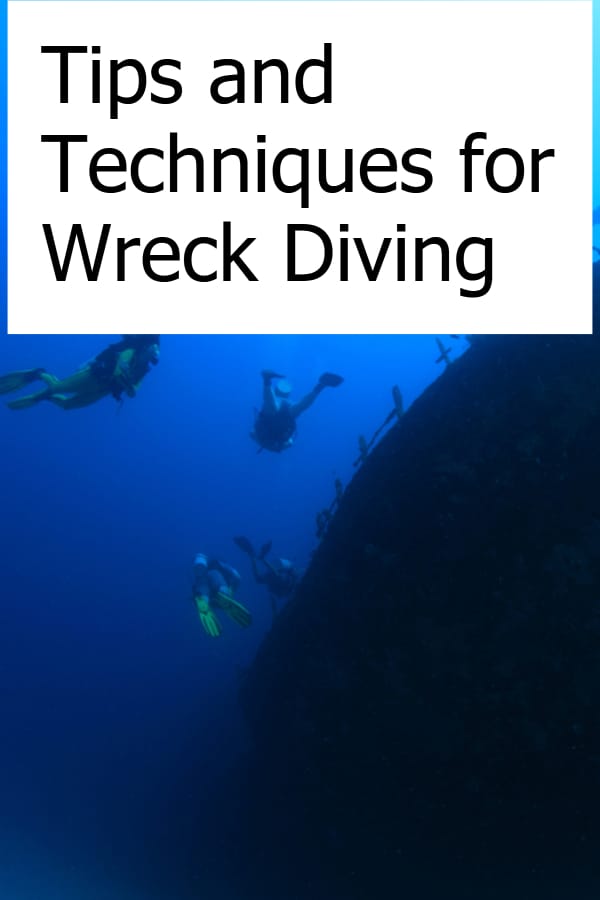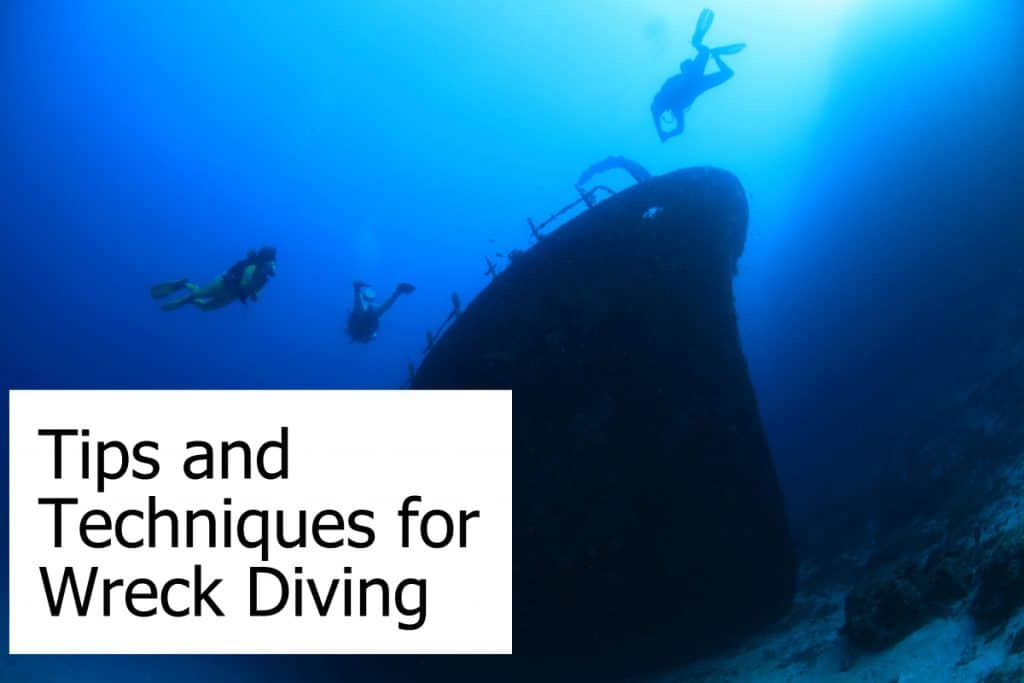Tips and Techniques for Wreck Diving
Something about shipwrecks has always fascinated people. Seeing pictures of sunken ships in the water captivates many divers. The call to wreck diving can be as strong as a siren’s song. If you want to learn more about wreck diving, then you’ve come to the right place.
What is Wreck Diving?
Wreck diving occurs when you dive near a sunken ship. Wreck diving does not necessarily mean penetrating the ship. Many wreck divers enjoy diving these locations for the unique ocean life that grows in these man-made ecosystems.
Wreck Diving Certification
When diving you can never have too much education or experience. It is always better to be over-prepared for the technical aspects of the dive than to be unaware of difficult features. Taking your wreck diving certification can help you navigate wrecks safely.
Unlike cave diving, wreck diving does not need special certifications to gain access to the locations. This does not mean that dive charters will not ask that you have certification beyond your open water diving certificate.
Many dive charters will request that you have at least an advanced open-water diving certificate even though legally you could dive without any certification. Some dives require technical diving specializations because of their depth, while others will need a wreck diving certification because of their difficulty.
Diving a wreck can be a fun experience for any diver as long as it is safe.
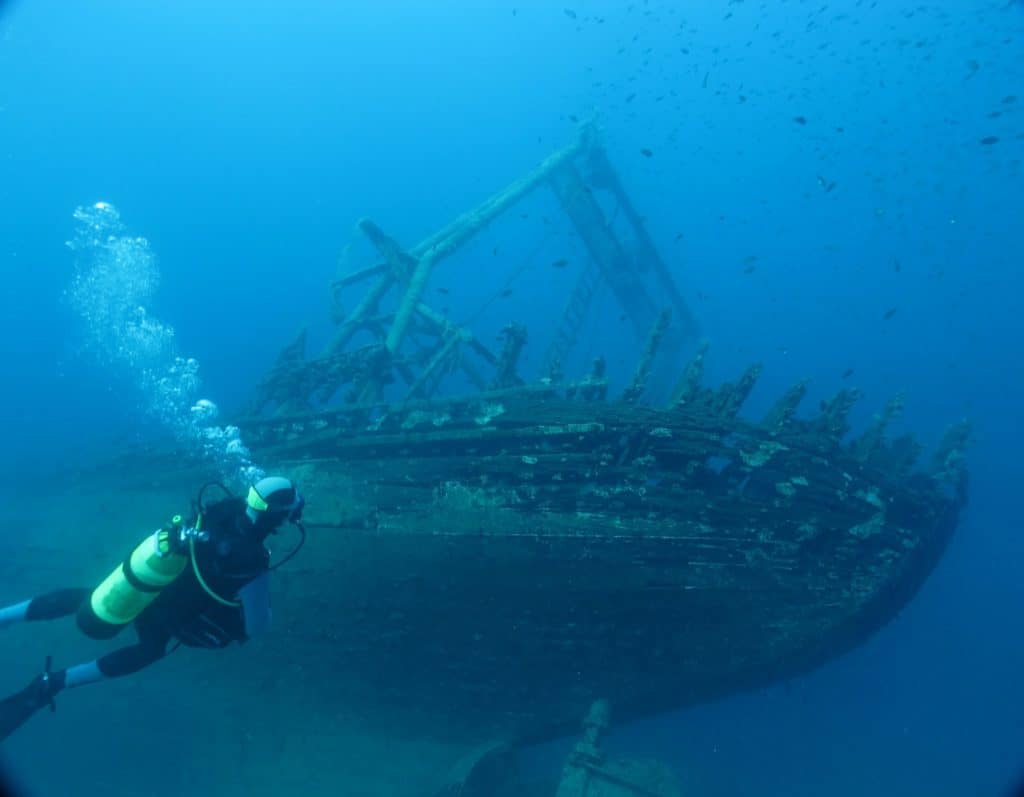
Do You Need Any Special Gear?
When diving a wreck there isn’t a need for specialized equipment. The primary difference between wreck diving and regular diving is streamlined equipment and redundancies.
The name of the wreck diving game is redundancies. Many wreck diving specialists carry multiple computers, depth gauges, dive lights, timing devices, air backups, goggles, and the list goes on. This is because wrecks do not allow divers easy access to the surface. Should an emergency happen within a wreck, you need to have access to everything you need to survive.
When wreck diving your survival may depend on your backups. Two of the most important backup systems that wreck divers carry with them are the bailout system and the high-powered dive light with backup. A bailout system is a separate and independent breathing apparatus.
The best dive light is a sinking light to prevent it from floating away if you need to set it on the seafloor or ship. It should have a long burn time with a high candlepower. You want either a rubber or metal shroud to protect the light from damage and something that easily attaches to your wrist, like a lanyard.
With dive lights, your backup light needs to be just as powerful as your primary light. If your primary light goes out your backup light will be your only source of light. Having good light during a wreck dive can mean the difference between life and death.
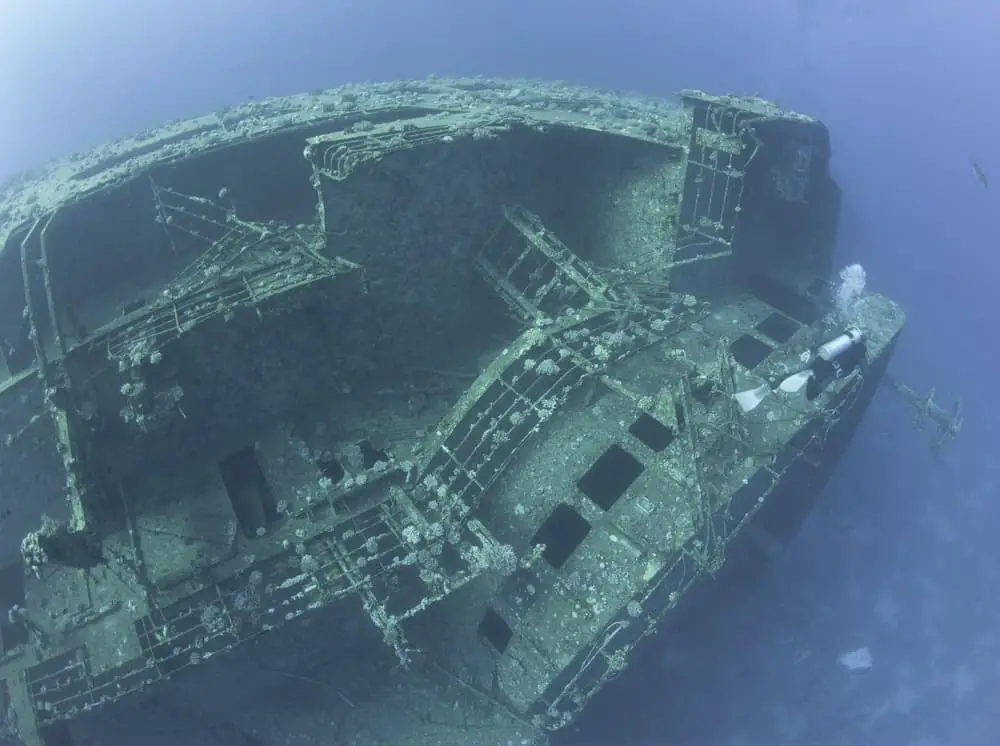
One of the essential survival tools for wreck diver is a sharp cutting tool. This is different from your average dive knife because it needs to cut through thick ropes and netting. Getting entangled and stuck in guidelines or other ropes on a wreck is a very real possibility. This is the reason that every wreck diver carries at least one specialized wreck diving knife.
Some dive knives (How to find the Best Dive Knife – Reviews and Buying Guide) combine with boater scissors into one tool so they can cut wires and cables. It is essential you have a cutting device that will allow you to cut through both cordage and metal. Your cutting tool should be readily accessible on your gear.
Precautions When Wreck Diving
There are four things that divers need to be aware of when wreck diving:
- Silt-out
- Sharp Objects
- Entanglements
- Line of sight
Silt-Out dangers
When on a wreck silt-out becomes a grave danger. Silt-out happens when your fins cause silt to come up from the bottom or debris to come off the overhead environment within the wreck. These two events can wreak havoc on your dive causing you to become disoriented or lost.
You can prevent silt-out when diving by changing your fin kicks. You can further prevent it by using a pull-and-glide technique to traverse the wreck. Pull-and-glide methods can be hazardous when dealing with sharp metal. Make sure you have adequate hand protection and that you are watching where you place your hands.
Sharp objects in wrecks
Sharp objects are not only bothersome for hands when using the pull-and-glide technique to travel through a wreck. They can also threaten to cut hoses and other equipment for divers. This is why it is important to have streamlined equipment when diving a wreck.
The hazards of sharp objects inside of wreckage are one reason many divers have redundancies on their air systems. Having a dual valve air tank helps decrease the risk of cut hoses and lines. However, you still must know if your body is touching sharp ledges and hooks while within a wreck.
Prevent getting entangled
Another reason that wreck divers must have excellent situational awareness is to prevent entanglement. Getting stuck on old fishing line, old the netting, guidelines, and other objects can be a death sentence for divers. Most divers ensure they have an extra sharp cutting tool to avoid being stuck should they become entangled.
Line of Sight to your Dive Buddy
Dive buddies are essential during wreck dives, not only to help with entanglements but to ensure safe navigation. Because of the complex nature of shipwrecked navigation, it is important to keep a constant line of sight on your dive buddy.
Unlike other dive situations where you can be a little further from your dive partner, in wreck diving you want to be within an arm’s reach.
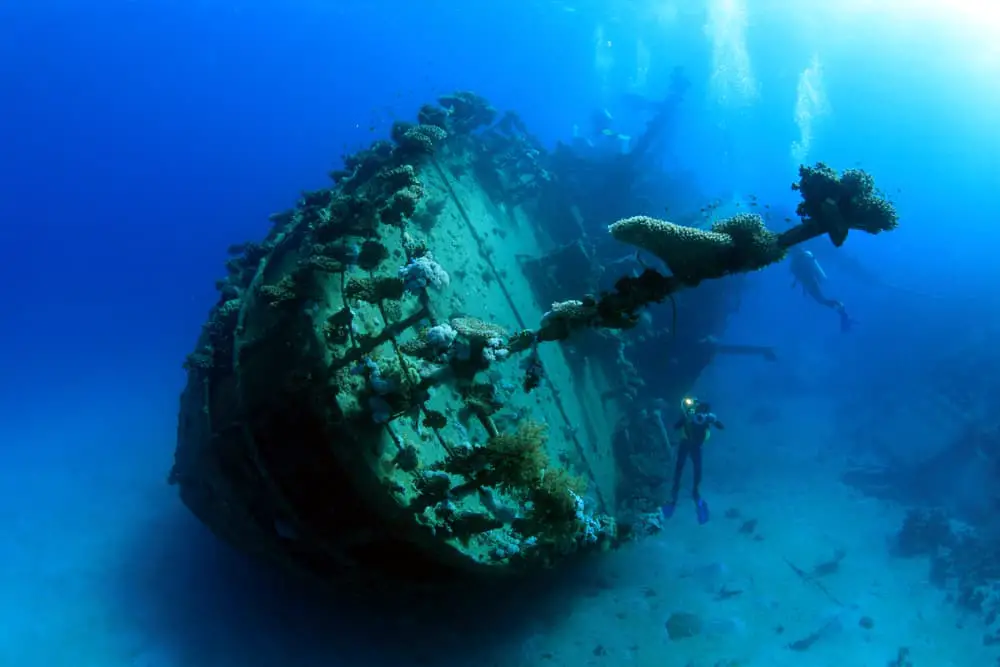
How to Start Wreck Diving
Depending on the dive location, you will not need any special certifications to wreck dive. There are some wreck dives located off the Florida Keys that are only 50 feet deep and can be done by anyone with an open water certification. However, for more advanced dives it is important to consider your wreck diver certification.
Certifying organizations, like PADI, offer wreck diving specialty diver courses. Depending on the location and depth of the dive you may need prerequisite courses to take your wreck diving specialty course. These specialty courses could include nitrox or tri-mix, deepwater diver, or underwater navigator.
